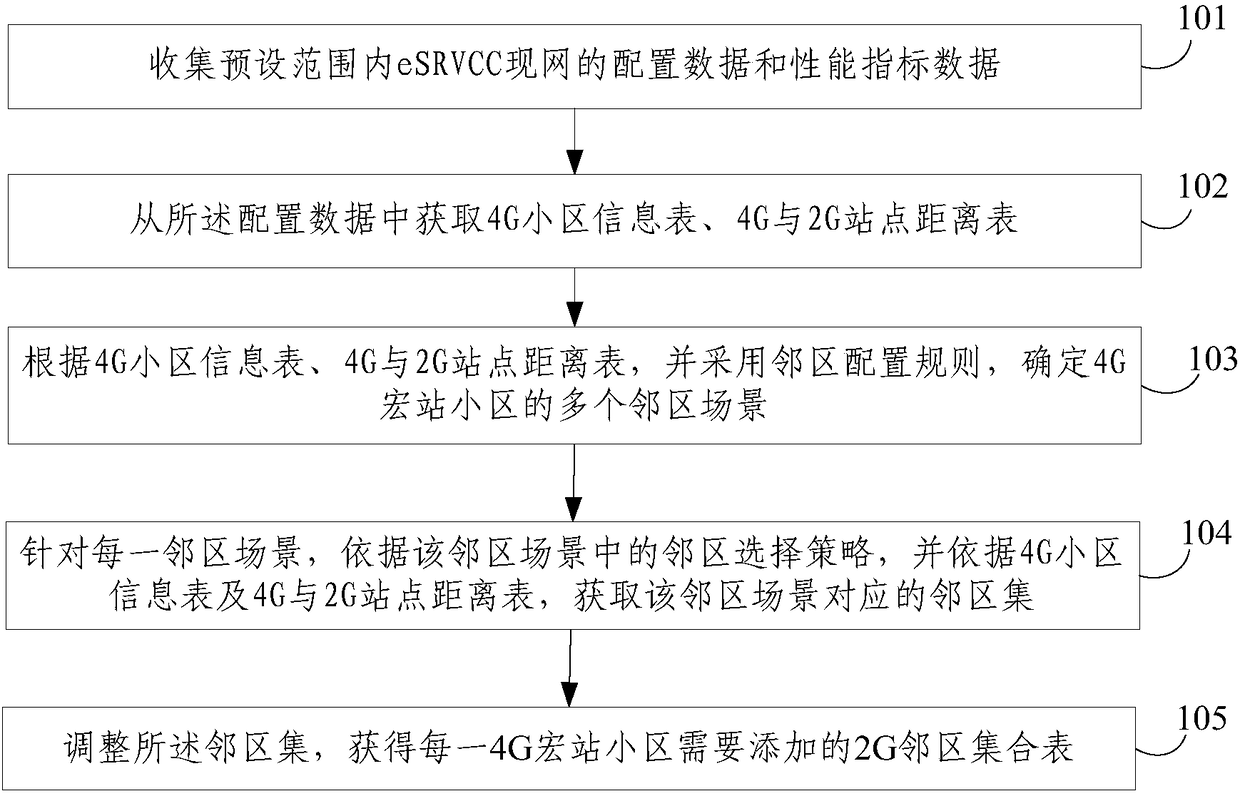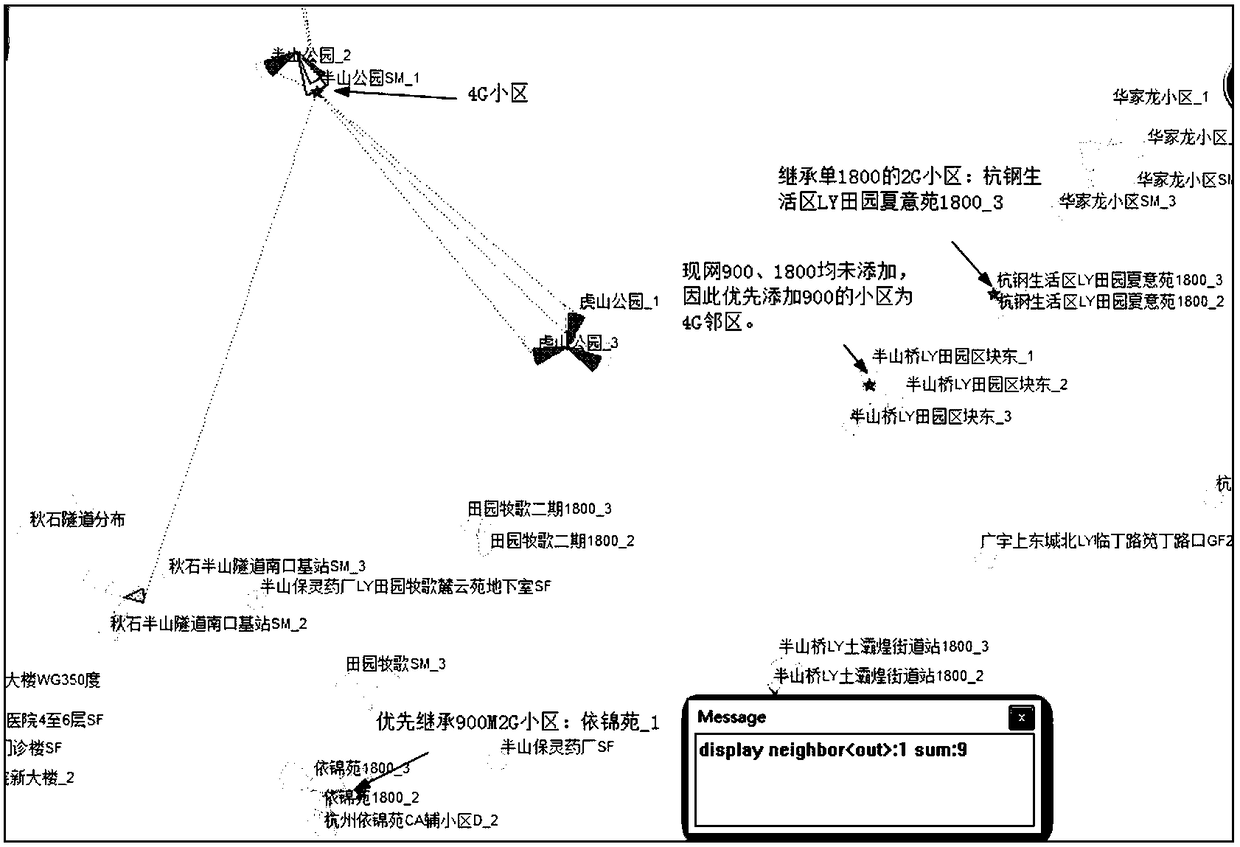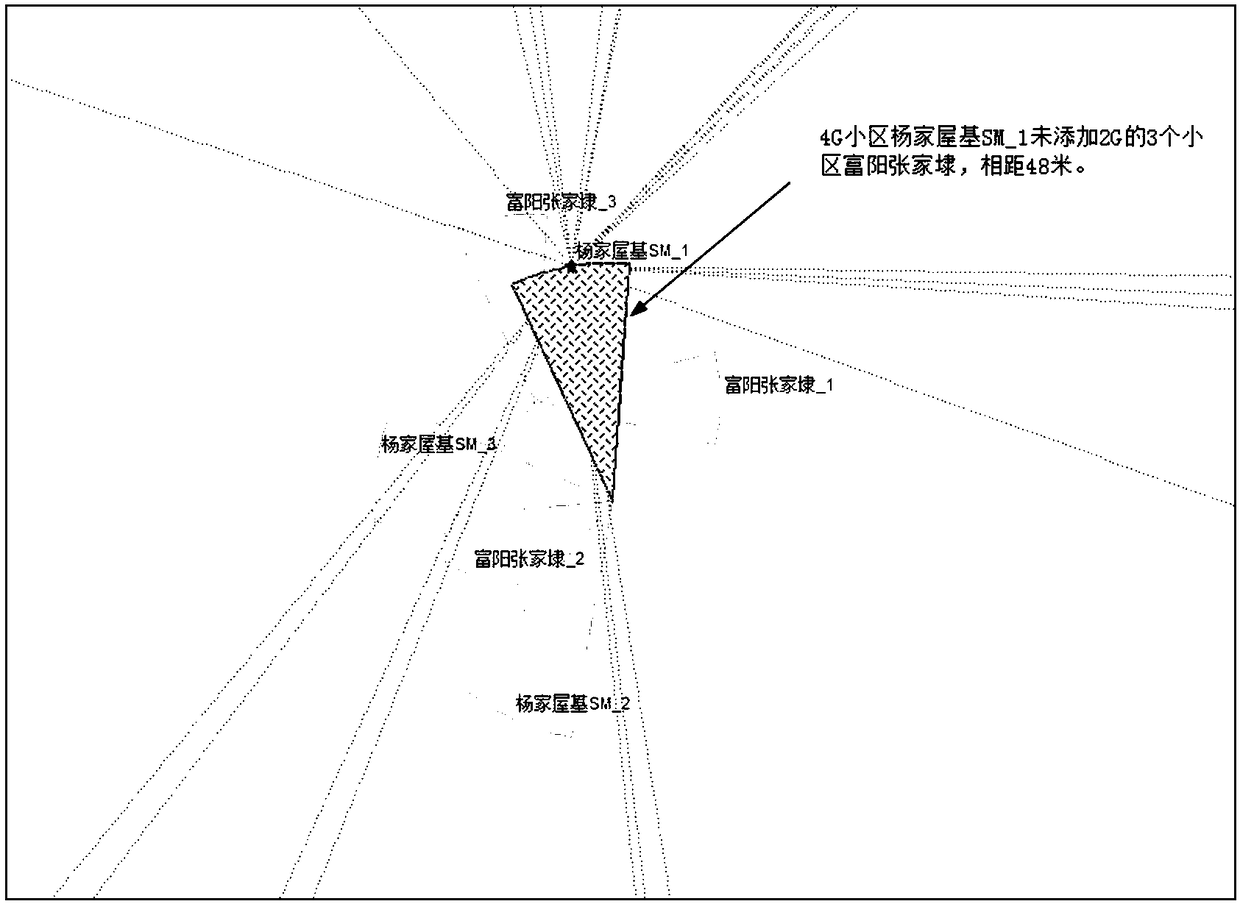2G neighboring cell set adaptation method based on scenarized eSRVCC service
A neighboring cell and scene technology, applied in network traffic/resource management, electrical components, wireless communication, etc., can solve problems such as low efficiency, time-consuming and labor-intensive verification process, and incapable of batch processing, so as to solve time-consuming and labor-intensive tasks and improve work efficiency Effect
- Summary
- Abstract
- Description
- Claims
- Application Information
AI Technical Summary
Problems solved by technology
Method used
Image
Examples
Embodiment 1
[0065] figure 1 A schematic flowchart of a method for matching a 2G neighbor cell set based on a scenario-based eSRVCC service provided by Embodiment 1 of the present invention is shown.
[0066] refer to figure 1 The method for adapting the 2G neighbor cell set based on the scenario-based eSRVCC service proposed in Embodiment 1 of the present invention specifically includes the following steps:
[0067] 101. Collect configuration data and performance index data of the eSRVCC live network within a preset range.
[0068] The configuration data includes: 4G cell engineering parameter general table, 2G cell engineering parameter general table, 4G configuration 2G adjacent cell table, 2G configuration 2G adjacent cell table, 2G / 4G co-site information table.
[0069] The performance index data includes: a statistical table of handover times from 4G cells to 2G cells, a statistical table of handover times from 2G cells to 2G cells, and a statistical table of CSFB fallback times fr...
Embodiment 2
[0095] In Embodiment 2 of the present invention, all the steps of Embodiment 1 above are included, wherein, for the first neighboring cell scenario, step 104 of the method in Embodiment 1 above specifically includes:
[0096] For the first neighboring cell scenario, at least the following four neighboring cell selection strategies can be used to obtain two neighboring cell sets: the first neighboring cell set and the third neighboring cell set;
[0097] Strategy 1: The first neighbor cell set can be obtained according to the co-site information of the 4G cell and the 2G cell in the 4G cell information table.
[0098] The first neighbor cell set includes a 2G cell co-sited with a 4G cell.
[0099] Strategy 2: In addition, according to the 2G cell configuration information in the 4G cell information table and the 4G and 2G site distance table, the third neighbor cell set can be obtained.
[0100] The third set of adjacent cells includes 2G cells that meet the following conditio...
Embodiment 3
[0126] In Embodiment 3 of the present invention, all the steps of Embodiment 1 above are included, wherein, for the second neighboring cell scenario, step 104 of the method in Embodiment 1 above specifically includes:
[0127]For the first neighbor cell scenario, at least the following four neighbor cell selection strategies can be used to obtain two neighbor cell sets: the second neighbor cell set and the fourth neighbor cell set;
[0128] Strategy 1: The second neighboring cell set can be obtained according to the co-site information of the 4G cell and the 2G cell in the 4G cell information table, and the distance table between the 4G and 2G sites.
[0129] The first neighbor cell set includes 2G cells of the 2G site that are not co-sited with the 4G site and within N meters of the 4G site.
[0130] Strategy 2: In addition, according to the 2G cell configuration information in the 4G cell information table and the 4G and 2G site distance table, the fourth neighbor cell set c...
PUM
 Login to View More
Login to View More Abstract
Description
Claims
Application Information
 Login to View More
Login to View More - R&D
- Intellectual Property
- Life Sciences
- Materials
- Tech Scout
- Unparalleled Data Quality
- Higher Quality Content
- 60% Fewer Hallucinations
Browse by: Latest US Patents, China's latest patents, Technical Efficacy Thesaurus, Application Domain, Technology Topic, Popular Technical Reports.
© 2025 PatSnap. All rights reserved.Legal|Privacy policy|Modern Slavery Act Transparency Statement|Sitemap|About US| Contact US: help@patsnap.com



